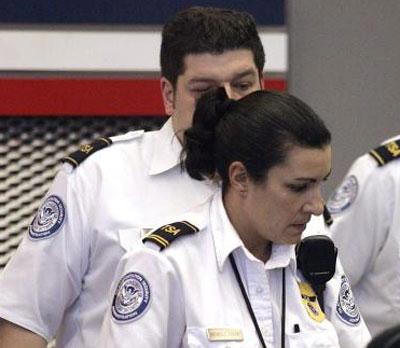|
|||||||||||
|
|
|
|||
|
By Daniel Baxter |
||||
 |
June 7, 2010 - The Coalition of Airline Pilots Associations (CAPA) which represents over 28,000 pilots stated that the Transportation Security Administration (TSA) has mass deployed its behavior detection program called SPOT (screening of passengers by observation techniques), but once again has failed to equip the people who need it most.
Airline
Crewmembers, who are all too often the first responders to criminal
activity in passenger and cargo aircraft, are not given this important
training.
It is time that
TSA recognizes that the real limitation of SPOT is that it is not in the
hands of those who have the time and opportunity to effectively utilize
the techniques. |
|||
|
|
||||
|
TSA BDOs (behavior detection officers) only have about 30 seconds to make a behavior diagnosis of passengers during the screening process. If trained properly, Airline Crewmembers might have several hours to ascertain if a possible threat exists. In fact, some of the specific behavioral patterns to look for are most effective if given time to develop. With time and opportunity, if a threat is identified, crewmembers could consult with each other, utilize any law enforcements assets onboard (such as Federal Air Marshals or Federal Flight Deck Officers), as well as request aid from experts on the ground. The best situation would be to identify the possible threat individual on the ground and address the situation before the aircraft becomes airborne. |
||||
|
If Umar Farouk was identified by crewmembers early in the flight as a possible risk, there could have been a real and tangible counterterrorism effort to mitigate the threat. Because those crewmembers were not trained in behavior recognition, they could not recognize what we now know were possible “indicators” presented by the terrorist.
The model already
exists for crewmembers to be trained in these techniques. Currently, the
Crewmember Self-Defense Training Program (CMSDT) is available in several
locations throughout the CAPA concur with the DHS’ GAO report which questions the effectiveness of SPOT, however, if put into the right hands, SPOT could be real layer of security for the flying public when and where we need it the most. |
| Other News Stories |
| ©AvStop
Online Magazine
Contact
Us
Return To News
|
|


